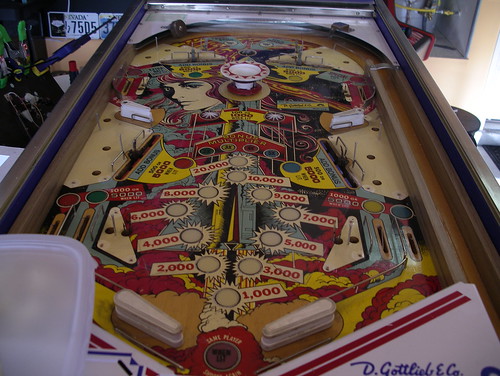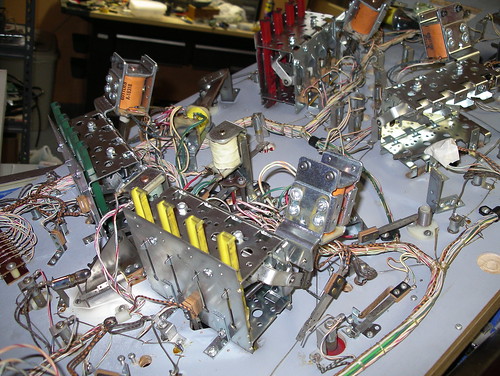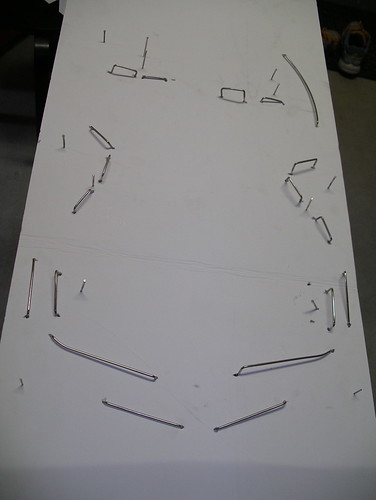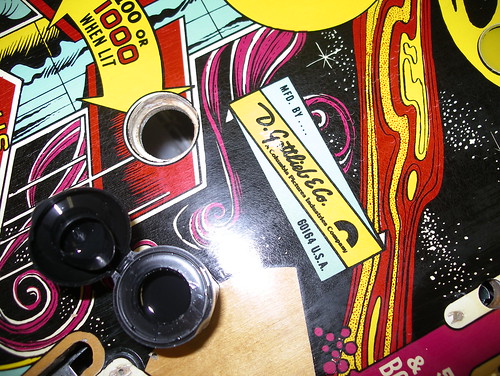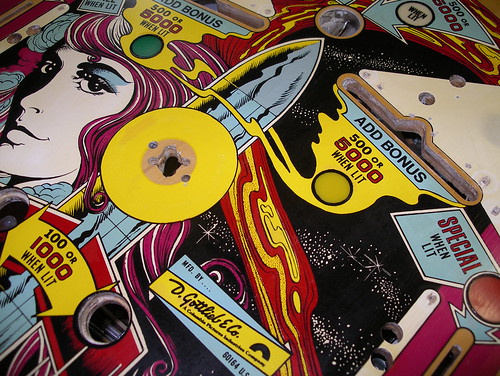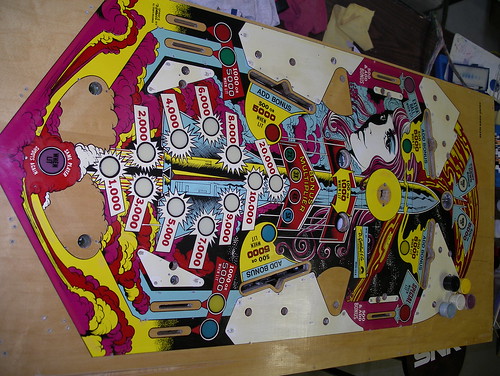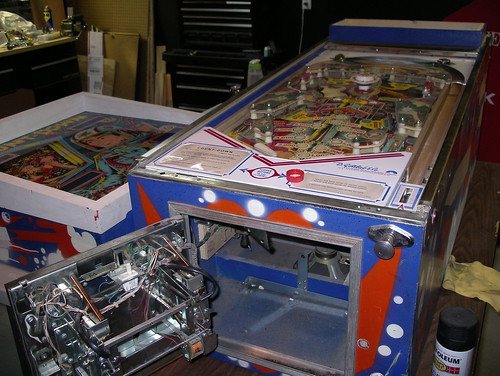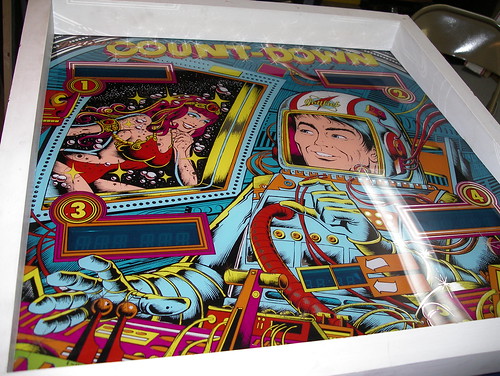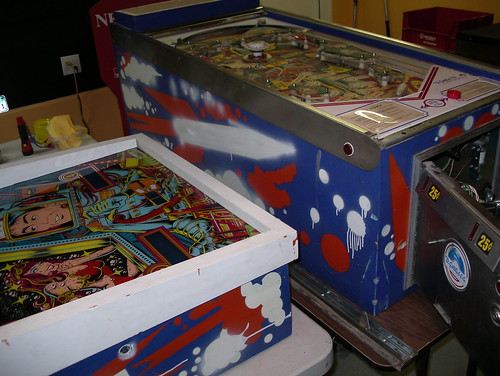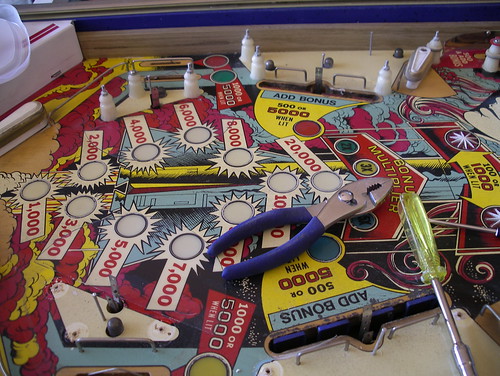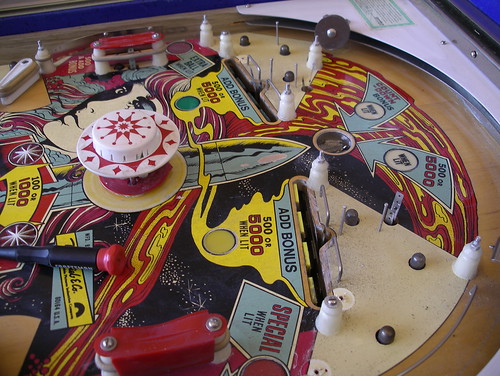So here’s what I started with… a handful of erratic spraypaint additions and a repainted backbox surround.
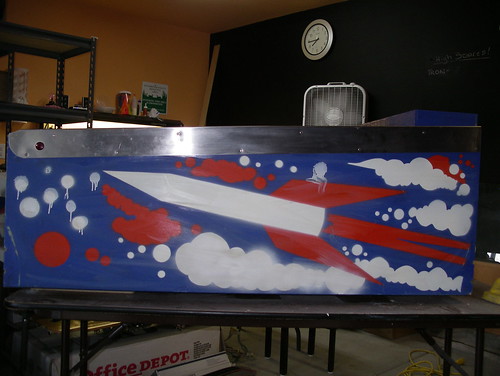
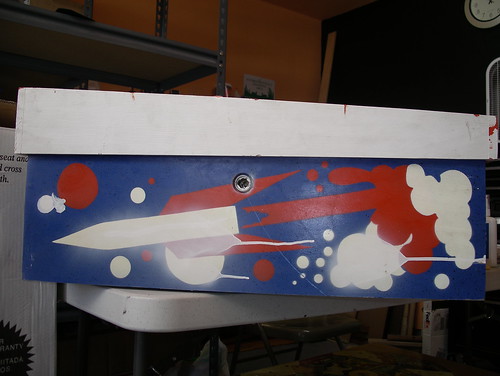
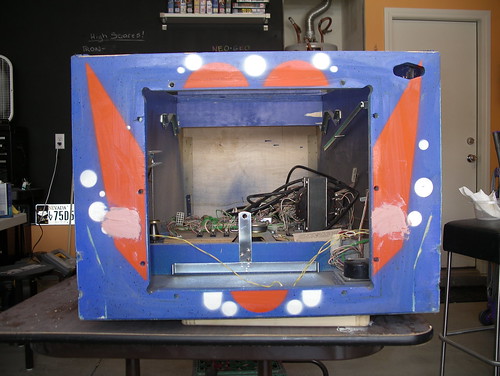
The original Count-Down stencil art is (in my opinion), the worst of all the Gottlieb System 1 games. A shame, as the playfield and backglass designs are some of the best from the era.
If you look at some of the better System 1 examples, you’ll see a much more skillful use of style and composition in the stencils. Thoughtful design, sharp and flowing edges, graphic design pieces that hold up as art on their own. Now compare those to Count-Down: rather than choosing lines carefully and pushing towards the iconic, the rocket was simply illustrated as a child would draw it (although I do like the coiling smoke of the liftoff), with cabinet front stenciling that did nothing to connect the pieces or bolster the overall theme.
So I said purists be damned, and drew up something new.
In the old days, back before the word hitchhiker became analogous to murderer, if you came across traveler with her thumb out while you were only driving a short distance, this is the gesture you’d give:
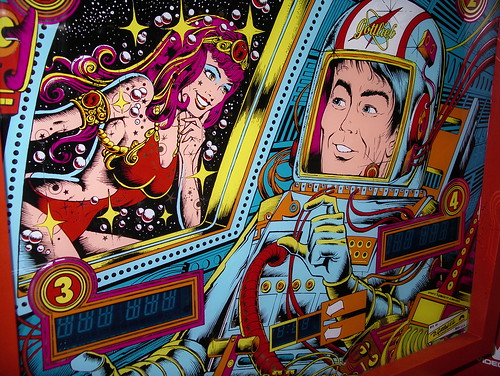
That gesture said, “hey there space babe, you’re welcome to come along, but I’m not going far,” giving your prospective hiker the chance to pass and wait out for a more beneficial riding opportunity. And in space babe terms, circling the Earth in a space station would certainly be considered short distance travel.
With that in mind, I themed the stencil redesign on the NASA space program of the 1970s, with a Saturn V rocket (carrying the Skylab payload), and a font based on the agency’s then-current worm logo. At the same time, I still wanted the cabinet to be recognizably Count-Down.
Here’s the final artwork, just before sending the Illustrator files off to Rich at ThisOldGame.com for reproduction.
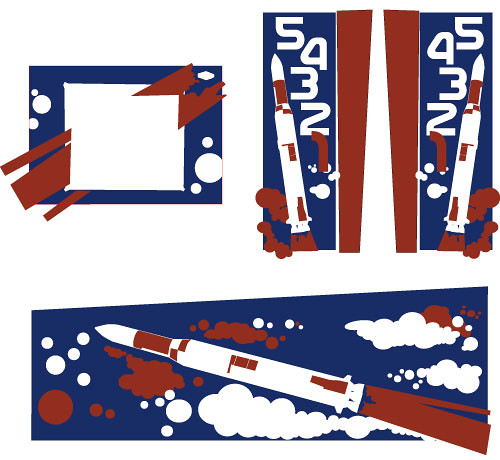
While the addition of the numbers meant that two sets of backbox stencils would have to be made (usually, stencils on one side simply mirror those on the other), I felt it was necessary to anchor the art to the game, and to help the backbox stand out as more than just a smaller version of the main cabinet design.
Here’s what I received in the mail a few weeks later:
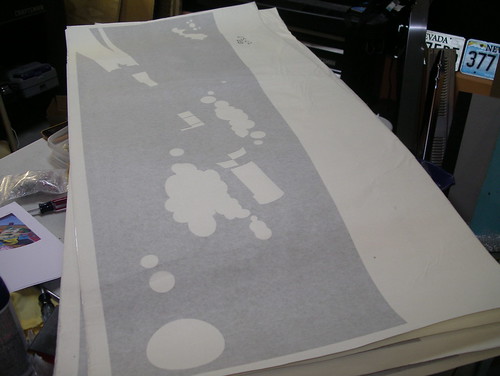
Continue reading
